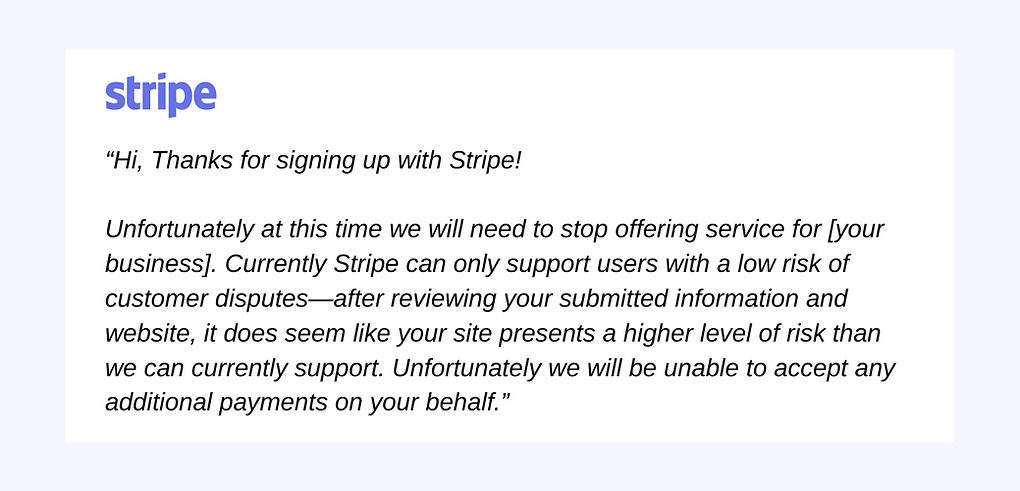Payment Orchestration Basics
Payment Orchestration vs Payment Gateway
It's crucial to distinguish between payment orchestration and payment gateways. While payment gateways authorize and process transactions, acting as digital equivalents to point-of-sale terminals, payment orchestration goes beyond mere processing. It acts as a central hub, managing a network of payment gateways and processes. This encompasses routing transactions, safeguarding against fraud, ensuring compliance, and delivering analytics across various payment gateways. In essence, it functions like a conductor, overseeing a symphony of payment services.
A Bit of History
The evolution of payment procedures has mirrored the ever-changing demands of commerce. Initially, businesses relied on singular payment gateways, sufficient for simpler online transactions. However, as e-commerce witnessed exponential growth, this approach revealed its limitations. The need to manage diverse currencies, multiple payment methods, and the increasing demand for secure and efficient transactions paved the way for the development of payment orchestration. This innovation revolutionized the landscape, empowering companies to navigate the complexities of digital payments by consolidating various services into a unified platform.
Current Landscape
The landscape of payment orchestration is currently experiencing rapid transformation, reflecting the growing complexity and international reach of e-commerce. Recent data highlights a significant rise in the utilization of payment orchestration platforms, driven by the pursuit of enhanced efficiency and improved customer experiences. Businesses are transitioning from dependence on individual payment gateways to embracing comprehensive, integrated systems that provide greater flexibility and control throughout the payment journey. This evolution is further accelerated by advancements in technology, such as artificial intelligence (AI) and blockchain, which are being incorporated into payment orchestration providers to bolster security, minimize fraud, and streamline transaction routing. Additionally, the push towards omnichannel retailing and the need to accommodate a vast array of payment methods across various regions are key drivers in the expansion and innovation of payment orchestration solutions.
Future Directions in Payment Orchestration
As the digital economy continues to flourish, payment orchestration is poised to become even more integral to the e-commerce ecosystem. The future of payment orchestration likely holds even deeper integration of emerging technologies. AI is expected to personalize payment experiences, blockchain will further enhance security and transparency, and the Internet of Things (IoT) will enable payments in novel and innovative contexts. Furthermore, as businesses strive for global reach, the ability to manage cross-border payments efficiently will become increasingly critical. Payment orchestration platforms will continue to develop, offering more sophisticated solutions to navigate the complexities of international operations, including currency conversion, tax compliance, and regulatory adherence. These advancements will drive operational efficiencies and open new avenues for enhancing customer engagement and loyalty in the digital age.

Key Emerging Technologies in Payment Orchestration
Artificial Intelligence and Machine Learning
Regarding payment orchestration, AI and ML are changing how payments are processed and secured. These technologies are helpful tools in detecting and preventing fraudulent trades, an essential aspect of digital payment. By analyzing vast amounts of transaction data, AI/ML algorithms can recognize patterns of behavior that are indicative of fraud, thereby proactively mitigating risks. Furthermore, AI and ML contribute significantly to predictive analysis, helping businesses to prepare for future tendencies and consumer behaviors. This precognition is invaluable in optimizing fee methods and enhancing customer satisfaction. Personalized experiences are another frontier where AI/ML is making strides. By understanding customer preferences and spending habits, these tools enable more tailored and efficient payment solutions, significantly enhancing the user background.
Blockchain Technology
Blockchain technology is increasingly recognizable for its transformative impact on payment orchestration. It offers unmatched security and clarity in transactions. Such a decentralized ledger system ensures that each transaction is recorded with no changes, making modifying or tampering with transaction data almost impossible. An inherent security feature like this is pivotal in the question of building trust and reliability in digital transactions. Additionally, blockchain enables faster settlements by bypassing traditional banking protocols and intermediaries, which often slow down the payment process. Quick procedures are beneficial in cross-border transactions, where blockchain can facilitate faster, more efficient charge processing without the typical delays associated with international banking systems.
API Integrations
Advanced API integrations form the foundation of modern payment orchestration platforms. They enable seamless connection and interaction between various payment gateways, processors, and systems. This interconnectedness is crucial for businesses operating online, as it allows them to offer customers a diverse range of payment options, catering to varied preferences and needs. APIs facilitate real-time data exchange, ensuring swift and reliable payment processes. Moreover, they enable the customization and scalability of payment solutions, allowing businesses to adapt swiftly to changing market demands and technological advancements.
.png)
Cloud Computing
Cloud computing has emerged as a key enabler in the scalability and reliability of payment orchestration systems. By leveraging cloud-based solutions, companies can manage payment processes more efficiently, with the flexibility to scale up or down based on transaction volumes. This scalability is essential for handling peak shopping periods or business growth without compromising performance. Cloud computing also offers high reliability, with reduced downtime and enhanced data backup and recovery options. This ensures that payment services are consistently available, which is essential for maintaining client trust and satisfaction. Moreover, cloud platforms facilitate the integration of other emerging technologies, such as AI and blockchain, further enhancing the capabilities of payment orchestration systems.
The Significance of Real-Time Analytics in Payment Orchestration
Real-time analytics are becoming increasingly crucial in payment orchestration, leveraging the power of big data to offer instant insights into transaction flows, customer behavior, and potential fraud risks. This capability empowers businesses to make data-driven decisions swiftly, enhancing operational efficiency and customer service. By providing real-time analytics, payment orchestration providers can give businesses a comprehensive overview of their payment ecosystem, enabling them to identify trends, pinpoint inefficiencies, and adapt their strategies accordingly. This level of insight is invaluable for optimizing payment approval rates, customizing customer payment experiences, and increasing overall transaction success rates. Additionally, real-time analytics play a central role in fraud prevention, enabling detection and response to suspicious activities as they occur, thus significantly reducing the risk of financial loss.
Enhancing Global Payments with Multi-Currency and Localization Support
In an increasingly globalized market, the ability to support multi-currency transactions and localize payment experiences is a key advantage offered by advanced payment orchestration platforms. These features empower companies to expand their reach to international clients, allowing them to pay in their local currency and through preferred regional payment methods. This significantly improves the customer experience and increases the likelihood of purchase completion. Multi-currency support and localization are complex processes that involve currency conversion, compliance with local tax laws, and integration with local payment gateways. However, by effectively managing these aspects, payment orchestration platforms can help businesses seamlessly navigate the complexities of global commerce, making international sales more accessible and less daunting. The inclusion of these capabilities signifies the sophisticated level of service that modern payment orchestration solutions offer, catering to the needs of businesses operating on an international scale.
.png)
Impact of Emerging Technologies
Enhancing User Experience
Emerging technologies in payment orchestration are significantly enhancing the user experience. Through the integration of AI and ML, payment systems can now offer individualized payment processes. Customers benefit from a smoother transaction experience, with AI-driven systems predicting their preferences and suggesting payment options accordingly. Blockchain technology also contributes to a more streamlined experience by enabling faster and more transparent transactions, particularly in cross-border payments where traditional methods can be time-consuming. Additionally, the seamless connectivity provided by advanced API integrations ensures that customers have a wide array of payment options at their fingertips, leading to a more satisfying and frictionless payment experience. The overall impact is a payment process that is not only faster and more secure but also tailored to individual customer needs and preferences.
Security Improvements
The incorporation of emerging technologies has brought significant advancements in security protocols and measures within payment orchestration systems. With its decentralized and tamper-proof ledger, blockchain technology has introduced a new level of security in transaction recording, significantly reducing the risk of fraud and unauthorized alterations. Similarly, AI and ML algorithms have become pivotal in detecting and preventing fraudulent activities by analyzing transaction patterns and flagging anomalies. These technologies ensure proactive security measures rather than reactive ones. Additionally, the use of cloud computing in payment orchestration provides enhanced data security through encrypted data storage and robust backup systems, safeguarding against data breaches and loss. The synergy of these technologies results in a robust security infrastructure that is vital in maintaining trust in digital payment platforms.
Operational Efficiency
The integration and automation brought about by emerging technologies have significantly improved operational efficiency in payment orchestration. AI and ML algorithms automate routine tasks such as transaction verification and fraud checks, reducing manual intervention and accelerating payment. This automation speeds up transactions and minimizes human errors, leading to more accurate and reliable payment processing. Cloud computing is crucial to operational efficiency by providing scalable and flexible infrastructure. Businesses can easily adjust their resources to handle varying transaction volumes, ensuring efficiency even during peak periods. API integrations streamline the connectivity between different payment services, reducing the complexity and time involved in managing multiple payment systems. These technological advancements collectively contribute to reduced operational costs and improved efficiency, allowing businesses to focus on growth and innovation.
New Standards
The convergence of emerging technologies within payment orchestration also sets new standards for customer convenience and accessibility. Voice-activated payments and biometric authentication methods, such as fingerprint and facial recognition, are beginning to emerge, driven by AI advancements. These methods add an extra layer of security and simplify the payment process for users, making transactions more intuitive and less intrusive. For people with disabilities or those who find traditional payment methods cumbersome, these innovations can significantly improve accessibility, ensuring that the digital economy is inclusive for all users. By continually pushing the boundaries of what is possible, these technologies are making it easier for customers to engage with digital platforms, enhancing their overall online shopping experience and satisfaction. This progress towards more accessible and convenient payment options is a testament to the power of innovation in meeting and exceeding consumer expectations in the digital age.
Challenges and Considerations
Implementation Challenges
Adopting emerging technologies in payment orchestration presents several challenges for businesses, with cost and complexity being the most prominent. The initial investment in advanced technologies like AI, blockchain, and cloud computing can be significant, especially for small and medium-sized businesses. This cost is financial and involves the time and resources required for implementation and training. Additionally, the complexity of integrating these new technologies with existing systems can be daunting. Businesses must navigate the technical intricacies of setting up and maintaining advanced payment orchestration systems, which often require specialized knowledge and skills. There's also the challenge of ensuring that these new systems are compatible with various payment methods and currencies, which is essential for businesses operating on a global scale. Overcoming these challenges requires careful planning, sufficient budget allocation, and seeking expertise from technology partners.
Regulatory Compliance
In the world of digital payments, adhering to global and local financial regulations is paramount. As payment orchestration technologies evolve, so do the regulatory landscapes governing them. Businesses must ensure that their payment systems comply with various regulations such as GDPR, PSD2 in Europe, and other local financial compliance laws. This includes implementing stringent security measures to protect customer data and transactions and adhering to AML and KYC regulations. The challenge lies in continuously monitoring and updating payment systems to align with these ever-changing regulations. Non-compliance can result in hefty fines and damage to a company's reputation, making it crucial for businesses to invest in compliance expertise and robust compliance protocols.
Future-proofing
In an industry characterized by rapid technological advancements, future-proofing payment orchestration systems are essential. Businesses must build systems that are effective today and adapt to future changes in technology and market demands. This requires a forward-thinking approach, investing in scalable and flexible technologies that can evolve over time. Embracing open-source platforms and APIs can provide the necessary agility, allowing for easy integration of new features and technologies as they emerge. Additionally, businesses should cultivate a culture of continuous learning and innovation, staying informed about technological trends and shifts in the payment landscape. By being proactive and adaptable, companies can ensure that their payment orchestration systems remain relevant and competitive in the long run.
The Balance
Beyond facing implementation costs and regulatory hurdles, businesses must ensure their payment systems remain interoperable and user-friendly amidst growing complexity. As they integrate various payment methods and partners, it is essential to keep the interface simple and intuitive. This complexity can harm the user experience, potentially deterring customers. Hence, while adopting advanced payment technologies, companies must balance innovation with ease of use, ensuring their systems are accessible and straightforward. This approach enhances customer satisfaction and encourages loyalty by making transactions smooth and hassle-free.
Case Studies and Real-World Applications
Successful Implementations
One notable example involves a large retail chain implementing AI and ML-based payment orchestration to improve client checkout experience. Because of the integration of these technologies, the retailer could offer personalized payment choices based on customer behavior and choices. This streamlined the payment process and increased consumer satisfaction and loyalty. The system’s AI component helped detect and reduce dangerous transactions, enhancing security.
Another case study focuses on a global e-commerce platform that adopted blockchain technology for its payment orchestration. This integration allowed faster, more evident, and more secure operations, particularly in cross-border payments. The decentralized nature of blockchain ensured that each transaction was recorded securely, reducing the risk of fraud and errors. This move significantly increased client trust in the platform, leading to higher trade volumes.
A third example is a financial services company that leveraged cloud computing and API integrations in its payment orchestration system. By moving to a cloud-based infrastructure, the company could scale its payment processing capabilities efficiently, easily handling peak transaction periods. Advanced API integrations enabled seamless connections with different fee gateways and financial institutions, offering customers a broader range of payment options. This flexibility and scalability led to improved operational efficiency and customer satisfaction.
Lessons Learned
From these case studies, several key lessons and best practices emerge. Firstly, personalization and security are crucial in enhancing the customer payment experience. AI and ML can significantly contribute to this by providing tailored payment options and securing transactions. Secondly, transaction transparency and speed are vital for customer trust and satisfaction. Blockchain technology can be instrumental in achieving this. Finally, scalability and flexibility in payment processing are essential for businesses to adapt to changing market demands. Cloud computing and API integrations offer the necessary infrastructure and connectivity to meet these needs. Adopting these technologies in payment orchestration improves operational efficiency and provides a competitive advantage in the ever-evolving digital marketplace.
Payment Orchestration FAQ
Is orchestration the same as automation?
Orchestration in the context of payment systems refers to the comprehensive coordination of various payment processes and services, while automation is a component of this broader orchestration. Automation deals with making certain processes function independently without manual intervention, like automated fraud checks. Orchestration, on the other hand, involves automating processes and strategically integrating and managing multiple payment gateways, methods, and services to create a cohesive payment experience. So, while automation is a key element, orchestration encompasses a wider scope of managing and optimizing the entire payment ecosystem.
What is the difference between payment optimization and orchestration?
Payment optimization and payment orchestration, though closely related, serve distinct functions. Payment optimization primarily focuses on improving individual aspects of the payment process, such as reducing transaction fees, enhancing approval rates, or streamlining the checkout experience. It's about making each transaction as efficient and cost-effective as possible. Payment orchestration, in contrast, is a more holistic approach. It includes payment optimization but goes further to manage and integrate various payment methods, gateways, and systems into a unified, efficient framework. It's about optimizing the entire payment infrastructure and strategy, rather than just individual transactions.
What is the difference between PSP and payment orchestration?
A Payment Service Provider (PSP) is a service that enables businesses to accept electronic payments by providing payment processing solutions, which might include multiple payment methods like credit cards, bank transfers, or e-wallets. PSPs facilitate the direct handling of transactions, acting as a link between merchants, consumers, and financial institutions. Payment orchestration, however, is a layer above PSPs. It involves managing multiple PSPs and other payment services within a single platform, offering businesses a centralized system for handling various payment processes. While a PSP offers the tools for transaction processing, payment orchestration provides a strategic framework to manage these tools effectively and cohesively.
What’s Next?
Looking ahead, these technologies are poised to continue their evolution, further revolutionizing payment orchestration. AI and ML are expected to become even more sophisticated, offering deeper personalization and more robust fraud detection. Blockchain could further streamline cross-border transactions, making them almost instantaneous and more transparent. Cloud computing will likely continue to offer unparalleled scalability and flexibility, catering to the growing demands of global digital commerce. As these technologies advance, the integration and orchestration of payment systems will become even more seamless, secure, and efficient.
Staying informed and adaptable is key for businesses looking to navigate this rapidly evolving landscape. Embracing these emerging technologies can streamline your payment processes and provide a competitive edge in the marketplace. If you're considering implementing or enhancing your payment orchestration system, Corytech is here to guide you through this journey. Our expertise in cutting-edge paytech solutions can help tailor a system that meets your unique business needs.
Request a personalized demo today to see how Corytech can assist in revolutionizing your payment orchestration system. Let us help you stay ahead in the ever-evolving world of digital payments.







 Payments
Payments
 Solutions
Solutions
 Industries
Industries
 Services
Services
 Resources
Resources

-(22).png)










